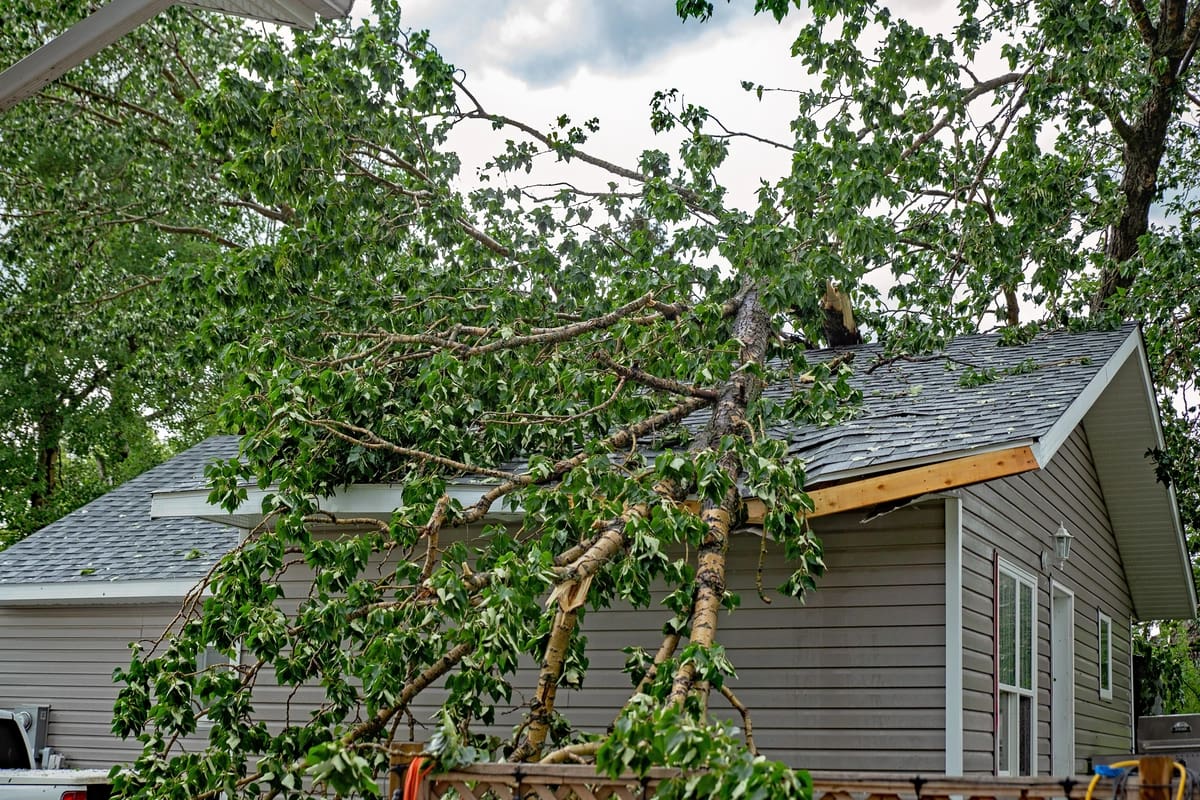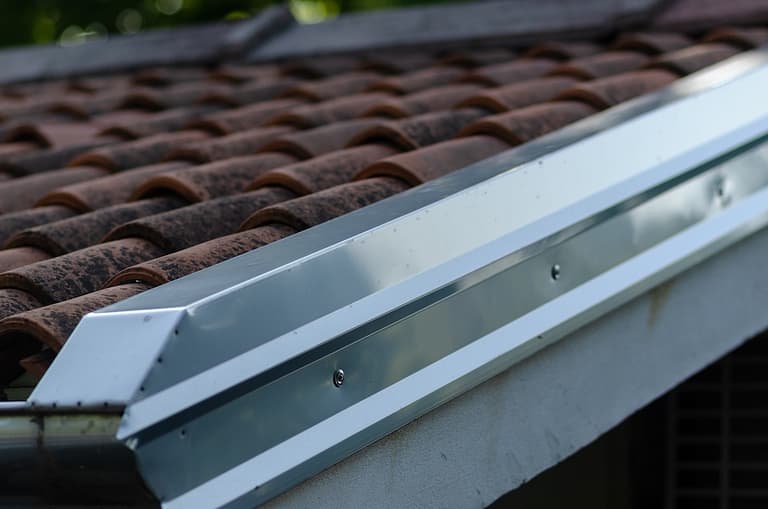Filing a roof insurance claim can feel overwhelming, especially when you’re already dealing with damage to your home. But with a clear process, the right documentation, and support from trusted professionals, you can navigate the claim smoothly and get your roof restored without unnecessary stress.
- Coverage clarity: Know what types of roof damage are typically covered.
- Step-by-step support: Understand how to file your claim correctly and avoid delays.
- Professional help: Learn how roofing contractors can make the process easier.
This guide walks you through everything you need to know to file a successful claim and get your roof repaired or replaced with confidence.
⛈️ What Types of Roof Damage Does Insurance Cover?
Homeowners insurance policies typically cover roof damage caused by sudden, accidental events known as “covered perils.” While policies vary, here are common types of roof damage that are usually included:
- Weather-related events: Wind, hail, heavy rain, snowstorms, and hurricanes can all cause damage that’s typically covered.
- Fire damage: Fires resulting from lightning strikes, electrical faults, or external sources are generally covered under standard policies.
- Falling objects: If a tree branch or other debris falls on your roof during a storm, your policy likely applies.
- Vandalism or theft: Deliberate damage to your roof from break-ins or vandalism is often included in coverage.
Important reminder: Every policy is different. It’s critical to review your own coverage and talk to your insurance representative before assuming any type of damage will be reimbursed.
📋 What Isn’t Covered by Homeowners Insurance?
Just as there are covered perils, there are also exclusions that can affect your eligibility for reimbursement.
- Wear and tear: Age-related deterioration is considered the homeowner’s responsibility.
- Neglect or poor maintenance: If the damage occurred due to lack of upkeep (like ignoring a leak), your claim may be denied.
- Cosmetic issues: Superficial damage that doesn’t affect function—like minor hail dents—often won’t qualify.
- Flood or earthquake damage: These typically require separate policies or endorsements.
Knowing these exclusions in advance can help you avoid wasting time on denied claims and give you a clearer picture of your true out-of-pocket responsibility.
✅ 10 Step Guide: How to File a Roof Insurance Claim
1. Assess the damage
After a storm or incident, inspect your roof from the ground. Look for missing shingles, exposed wood, granule loss, dents, or visible leaks. Use binoculars or a drone for better visibility, and never climb on the roof yourself unless it’s completely safe to do so.
- Documentation tip: Take clear photos and videos from multiple angles to support your claim.
2. Review your insurance policy
Locate your homeowners insurance policy and review the roof coverage section. Identify the deductible amount, claim limits, and any specific exclusions that apply to roof damage.
- Key detail: Knowing what’s included will help you speak confidently with your insurance provider.
3. Contact your insurance company
File your claim as soon as possible. Most companies have a set time limit for reporting damage after an event. You’ll be assigned a claim number and a representative.
- What to expect: You may be asked to submit your documentation right away or schedule an adjuster inspection.
4. Schedule an inspection
An insurance adjuster will be sent to assess the extent of the damage and determine whether the claim qualifies for coverage.
- Be present: If possible, be available during the inspection to answer questions and ensure all damage is noted.
5. Get estimates from roofing contractors
Even if your insurer does their own evaluation, it’s wise to get independent quotes from licensed roofing contractors. This gives you leverage if the insurer’s initial settlement offer is too low.
- Documentation advantage: Most contractors will provide itemized estimates with labor, materials, and scope of work included.
6. Submit your full claim package
Once you’ve gathered estimates, photos, videos, and inspection findings, send everything to your insurer to finalize the claim.
- Pro tip: Keep backup copies of all documentation in case of disputes or delays.
7. Review your settlement offer
Your insurance company will review the information and either approve, deny, or request more details. If approved, they’ll issue a settlement offer outlining the scope of covered repairs and your deductible responsibility.
- Carefully check: Make sure the offer includes all necessary repairs—not just the obvious or cosmetic damage.
8. Select a reputable contractor
Choose a contractor with experience in insurance claims, proper licensing, and strong reviews. Make sure they’re familiar with your local building codes and the type of roofing material on your home.
- Avoid red flags: Steer clear of contractors who offer to waive your deductible or pressure you into fast decisions.
9. Complete the roof repairs or replacement
Work with your chosen contractor to schedule and complete the repairs. Most policies allow you to pay the contractor directly once you’ve received the insurance payout.
- Save receipts: Keep all invoices and proof of payment to finalize the claim.
10. Finalize the claim with your insurance company
Submit your receipts and any required documents to your insurance provider. Once reviewed, they’ll issue the remaining payment (minus your deductible) if applicable.
- Wrap-up tip: Confirm that the claim is officially closed and that all coverage has been applied.
💵 Roof Replacement Costs: With vs. Without Insurance
The cost of replacing your roof can be significant, and having insurance coverage often makes the difference between a manageable repair and a financial burden.
Without Insurance
- Asphalt shingles: $5,000–$12,000 depending on roof size and quality
- Metal roofs: $10,000–$20,000+ depending on material and slope
- Tile or slate roofs: $20,000–$40,000+ due to labor intensity and materials
With Insurance
If your roof damage is covered by insurance, your out-of-pocket cost is typically limited to your deductible.
- Deductible range: $500 to $2,000 is typical for most homeowners
- Savings insight: A successful claim could reduce your costs by thousands—especially with premium roofing materials or complex installations
❗️ Factors That Affect Roof Replacement Pricing
The cost to replace your roof—whether insured or not—can vary widely. Here are key variables that influence pricing:
- Roof size: Larger roofs require more materials and labor.
- Roof pitch: Steeper roofs are more difficult to work on and may increase labor costs.
- Material type: Asphalt shingles are the most affordable, while tile, slate, and metal cost more.
- Location: Regional labor rates and material availability affect overall costs.
- Damage severity: More extensive damage may require decking repair, added ventilation, or structural reinforcement.
Always request multiple bids from reputable contractors and ask for a detailed breakdown of costs.
💪 Get the Coverage and Support You Deserve
Filing a roof insurance claim doesn’t have to be complicated. When you understand your policy, document the damage, and follow the right steps, you can recover quickly from unexpected roof problems and restore your home with confidence. G. Cannon Roofing has helped countless homeowners get their roofs repaired or replaced the right way.
Contact G. Cannon today for a free estimate for your roof repair project. Let us help you protect your home and your peace of mind—one shingle at a time.










